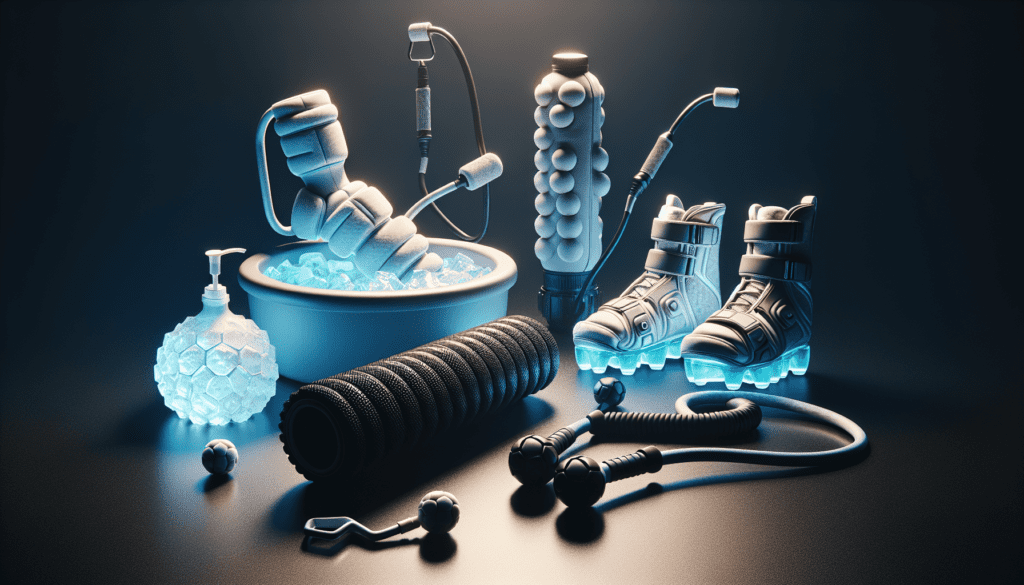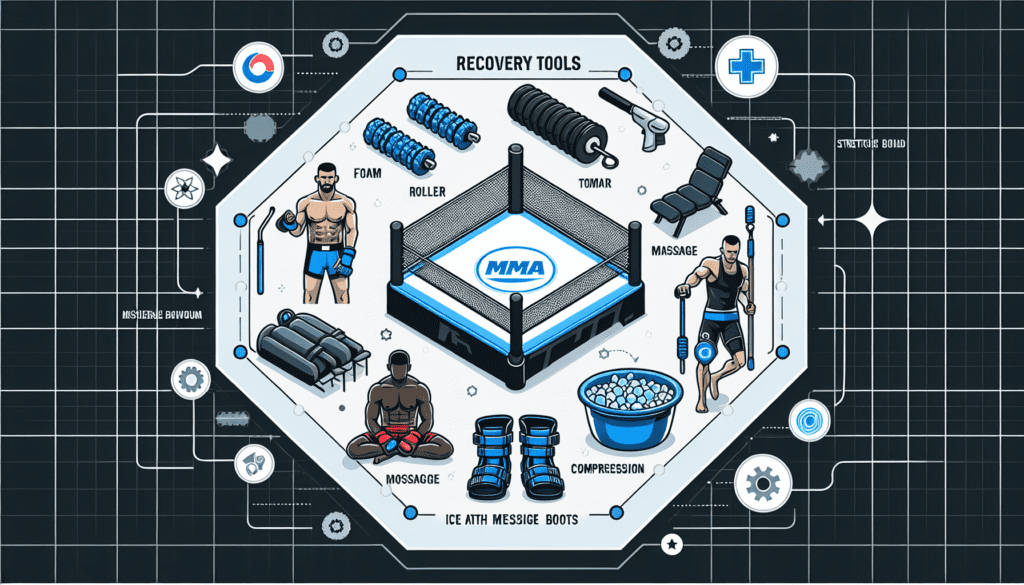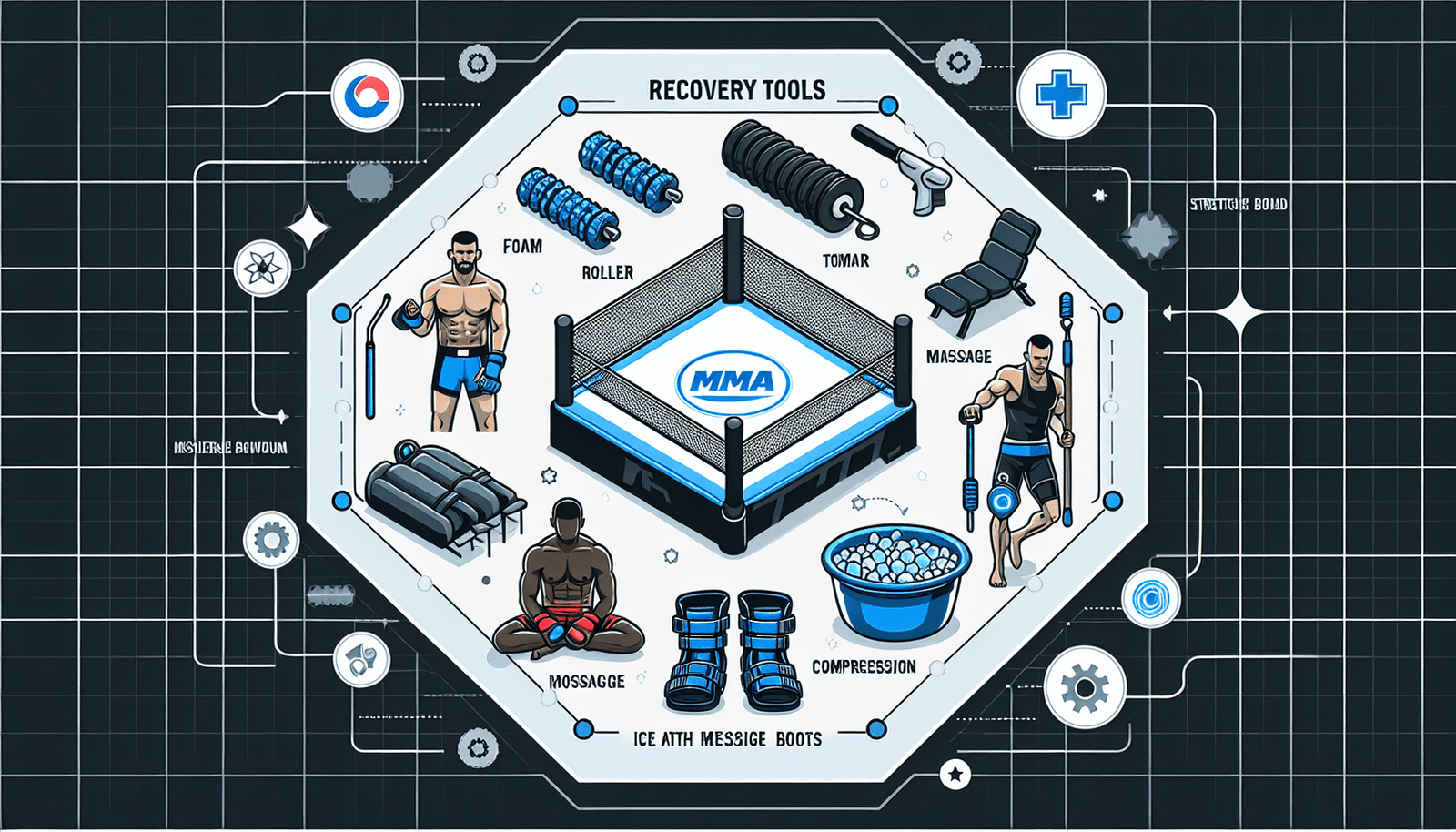Are you an MMA fighter looking for effective ways to enhance your recovery? Look no further! In this article, we have compiled a list of the top 5 recovery tools specifically tailored for MMA fighters. These tools will not only help you recover faster but also optimize your performance in the octagon. Whether you’re a professional fighter or just starting your journey, incorporating these recovery tools into your routine will give you the edge you need to stay at the top of your game. So, let’s dive in and explore the world of recovery for MMA fighters.

Foam Roller
Benefits of Using a Foam Roller
Using a foam roller is an excellent way to aid in muscle recovery for MMA fighters. Foam rolling, also known as self-myofascial release, helps to release tightness and knots in the muscles, improve circulation, and reduce muscle soreness after intense training sessions. By applying pressure to specific areas of the body, foam rolling helps to break up adhesions and tight muscles, allowing for better mobility and flexibility.
How to Use a Foam Roller for Muscle Recovery
Using a foam roller is relatively simple and can be incorporated into your post-workout routine. Start by placing the foam roller on the ground and positioning yourself on top of it. For example, if you want to target your quadriceps, lie face down with the foam roller underneath your thighs.
Once in position, use your body weight to apply pressure onto the foam roller and roll back and forth over the targeted muscle. As you encounter tight or sore areas, pause and allow the foam roller to apply deeper pressure to release the tension. Continue rolling and pausing for around 60-90 seconds on each muscle group.
Recommended Foam Rollers for MMA Fighters
When it comes to choosing a foam roller, there are various options available on the market. One popular choice is the TriggerPoint GRID Foam Roller. This foam roller is designed with a 3D surface that mimics the hands of a massage therapist, providing effective muscle relief. Another great option is the RumbleRoller, which features firm but flexible bumps that penetrate deep into the muscles, helping to alleviate tightness and knots.
Massage Gun
Benefits of Using a Massage Gun
A massage gun, also known as a percussion massager, is a handheld device that uses rapid pulses to provide deep tissue massage. Using a massage gun can help MMA fighters improve muscle recovery by increasing blood flow, reducing muscle soreness, and enhancing overall relaxation.
The rapid pulses produced by the massage gun penetrate deep into the muscles, stimulating circulation and promoting nutrient-rich blood flow to the affected areas. This increased blood flow helps to flush out toxins and waste products that accumulate during intense training sessions, allowing for faster muscle recovery and reduced inflammation.
How to Use a Massage Gun for Muscle Recovery
Using a massage gun is quite simple. Start by selecting the appropriate massage head attachment for the targeted muscle group. For example, a round attachment is suitable for larger areas like the glutes or thighs, while a bullet attachment is ideal for smaller, more specific areas like the calves or forearms.
Once you have chosen the appropriate attachment, turn on the massage gun and apply gentle pressure to the targeted muscle. Move the massage gun in a slow, circular motion or follow the muscle fibers for best results. Spend 30-60 seconds on each muscle group, making sure to cover all the major muscle groups used in your training.
Recommended Massage Guns for MMA Fighters
There are several massage guns available on the market, each with unique features and benefits. One popular choice among MMA fighters is the Theragun PRO. This massage gun offers customizable speed settings, quiet operation, and an ergonomic design for easy handling. Another option is the Hyperice Hypervolt, which is praised for its quiet operation and powerful percussions that effectively target deep muscle tissues.
Compression Gear
Benefits of Using Compression Gear
Compression gear, such as compression sleeves, shorts, and shirts, provide a range of benefits for MMA fighters during muscle recovery. The tight-fitting garments exert gentle pressure on the muscles, promoting blood flow, reducing muscle vibration, and enhancing overall muscle recovery.
The compression provided by these garments helps to improve blood circulation, which aids in the delivery of oxygen and nutrients to the muscles. This increased blood flow also helps to remove waste products such as lactic acid, reducing muscle soreness and fatigue. In addition, compression gear supports the muscles and reduces muscle oscillation, which can improve performance and reduce the risk of injury.
Types of Compression Gear for MMA Fighters
MMA fighters have a wide selection of compression gear to choose from, depending on their specific needs. Compression sleeves for the arms, legs, and calves are popular choices for targeted muscle support and recovery. Compression shorts and shirts provide full-body compression benefits, helping to stabilize the core and upper body muscles during training and recovery.
It is important to select compression gear with the right fit and level of compression. Look for garments that are snug but not constricting, and choose a compression level that matches your comfort and needs. Graduated compression, where the level of compression is highest at the extremities and gradually decreases towards the center, is often recommended for optimal benefits.
Recommended Compression Gear Brands
When it comes to compression gear, there are several reputable brands that cater to the needs of MMA fighters. Under Armour, Nike, and 2XU are well-known brands that offer a wide range of compression gear designed specifically for athletes. These brands prioritize quality, durability, and performance, ensuring that MMA fighters receive the maximum benefits from their compression gear.
Ice Bath
Benefits of Taking Ice Baths
Taking ice baths, also known as cold water immersion, is a popular method utilized by MMA fighters for muscle recovery. The cold temperature helps to reduce inflammation, numb pain, and accelerate the recovery process after intense training sessions. Ice baths are effective in reducing muscle soreness, flushing out metabolic waste, and promoting muscle repair.
The cold water causes blood vessels to constrict, reducing the blood flow to the muscles. Once out of the ice bath, the blood vessels dilate, flushing out cellular waste and increasing the delivery of oxygen and nutrients to the muscles. This process aids in reducing inflammation and promoting faster recovery.
How to Take an Ice Bath for Muscle Recovery
To take an ice bath for muscle recovery, start by filling a bathtub or large container with cold water and ice. The water temperature should be between 10 to 15 degrees Celsius (50 to 59 degrees Fahrenheit). Submerge your body in the icy water, making sure it covers the targeted muscles for 10-15 minutes.
During the ice bath, try to stay as relaxed as possible. Focus on deep breathing and keeping your body submerged in the cold water. If the cold becomes unbearable, you can use a towel or blanket to cover your upper body to retain some heat.
Safety Tips for Ice Baths
While ice baths can be highly beneficial for muscle recovery, it is important to take certain precautions to ensure safety. Firstly, it is recommended to consult with a healthcare professional, especially if you have any underlying medical conditions. Additionally, never immerse your head or face in the icy water to avoid the risk of hypothermia or an ice cream headache.
After an ice bath, it is essential to warm up gradually. Avoid exposing yourself to extreme temperatures immediately after the bath, as your body needs time to readjust. Slowly warm up by wrapping yourself in a warm towel or blanket, and engage in light stretching or mobility exercises to promote circulation.


